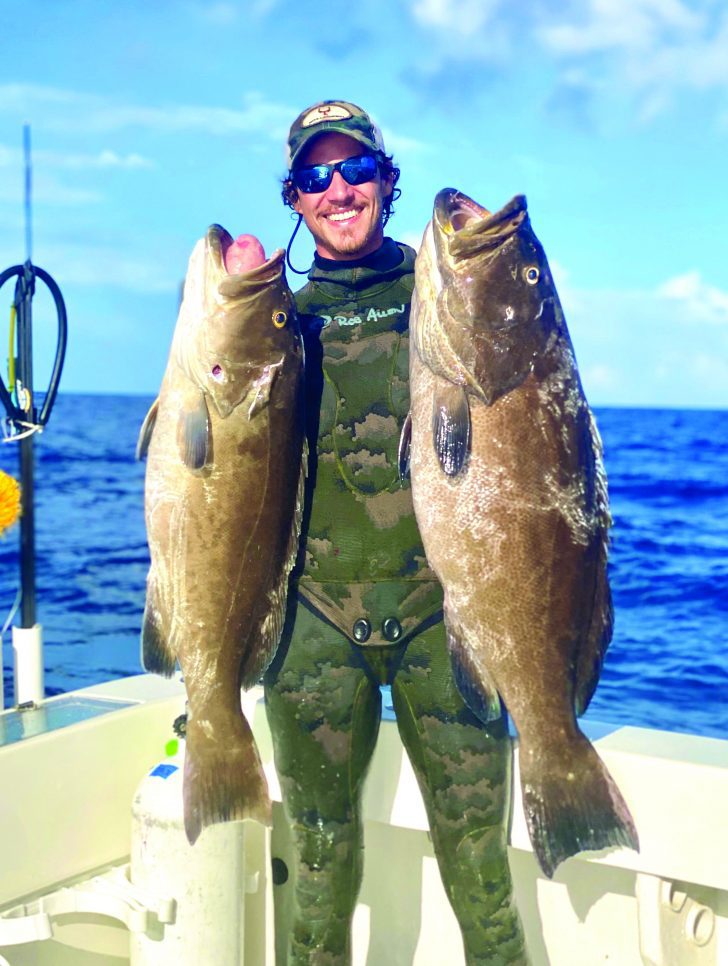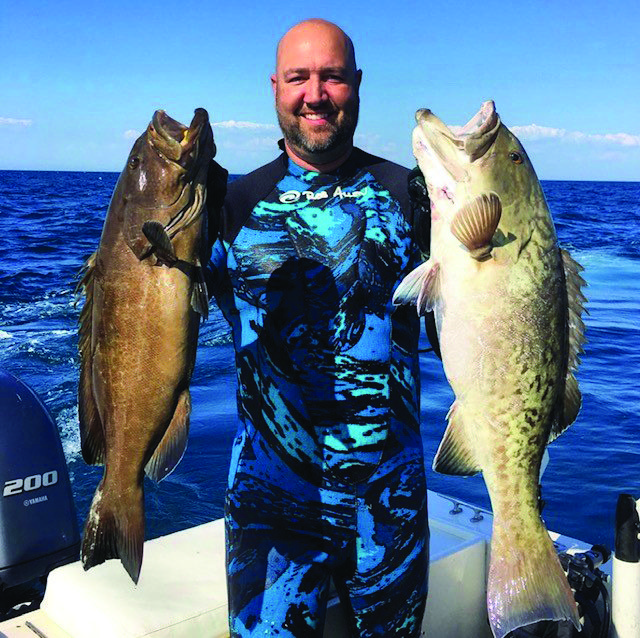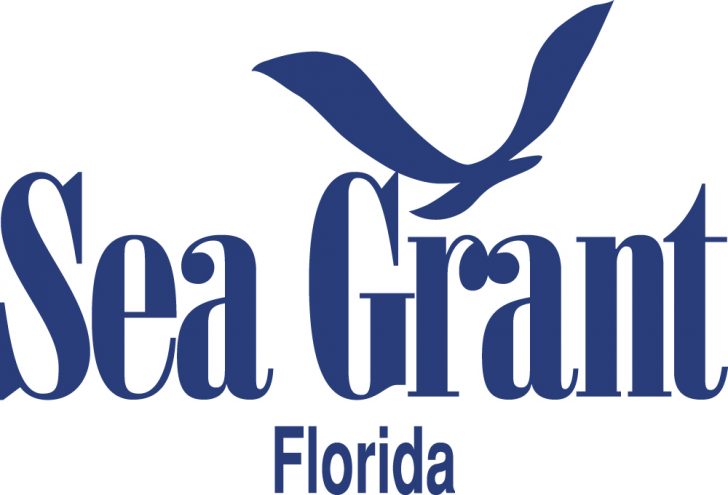By Michael Sipos, Florida Sea Grant agent, UF/IFAS Extension Collier County
Gag Grouper, aka, Mycteroperca microlepis
Florida state record and International Game and Fish Association world record: 80 pounds, 6 ounces, caught in Destin, Florida
Gag grouper are a popular fish in the recreational and commercial fishing sectors making them among the more valuable species in the southeastern United States. Prized for their excellent food and game qualities, anglers typically target harvestable-size fish around artificial reefs, natural limestone ledges and rocky bottom in depths from 20 to 500 feet.

Gag grouper can live up to 30 years and are protogynous hermaphrodites. That means they are born female and later transition to male. This strategy is more common in this family than in some other groups of fish. Females usually reach sexual maturity at around 4 years old , while males become mature at about 8,. This results in large male fish becoming the limiting factor for successful spawning groups. During the spawn, gag grouper aggregate in large groups along the continental shelf between January and May.
Females spawn multiple times during a season and can release anywhere from 60,000 to 1.7 million eggs at a time. These eggs are buoyant and hatch in about 45 hours, and newly hatched grouper stay in larval form for 40-50 days.
The scientific name for gag grouper, Mycteroperca microlepis is derived from Greek and can be translated to “nose perch, small scales.” This species can go by a few common names, and in areas of high species overlap, gags are often verbally or visually misidentified with other grouper. Small gags are often called “grass grouper” while larger specimens go by “rusty bellies” or even “black grouper” due the darker color that may be on the bottom and fin edges of large fish.
This can get confusing as there is a species of grouper with the common name of “black grouper” (Mycteroperca bonaci) which is the gag’s more tropical cousin. In areas where gags and blacks overlap, black grouper often are referred to as “carbos” or “true” black grouper. Side by side, it can be easy to distinguish one from the other, but when looking at an individual, identification may be more difficult.

It’s important to be able to properly identify these two very similar species as regulations between the gag and black grouper may vary between season and coasts.
Michael Sipos is the Florida Sea Grant agent for UF/IFAS Extension Collier County. Contact him at sipos624@ufl.edu. For more fishy content and updates on upcoming educational programs, please check out the Collier County Sea Grant Facebook page, YouTube Channel, Instagram listing or Michael Sipos’ UF/IFAS blog.


